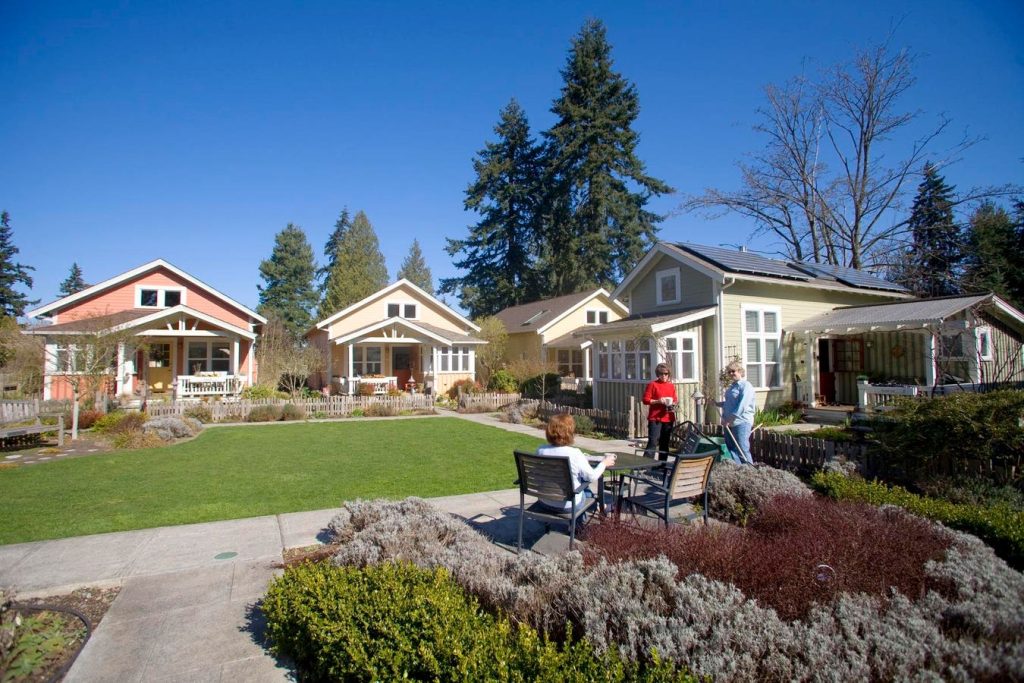In today’s aging-in-place oriented environment, many older adults are determined to stay in their homes indefinitely. However, when they experience a significant change to their health, that conviction tends to fall apart. These health changes often result in the unsuitability (or significant difficulty) of living independently, which often leads to individuals and families looking more seriously at a safer, more secure living situation in a senior living community.
A study by the Geriatrics Healthcare Professionals and published in Journal of the American Geriatrics Society looked more closely at how and why these changes in attitude come about. The objective of the qualitative study was to “understand what influences older adults to change their attitude and plans about aging in place (AIP) versus living in long-term care settings.”
Influences found in the study included:
- Personal health experience (e.g. sudden stroke, diagnosis of a long-term illness or condition)
- Loved ones health experience (e.g. spouses diagnosis or sudden health event)
- Increased contemplation (more time thinking about what would be best in the long term)
- Influence of social network (discussions with family members or witnessing friends making new decisions)
One key result of the study was the following: over a 36-month period, close to half of the older adults in the study changed their minds about whether to age in place or in long-term care.
For older adults with family support, these kinds of decisions are often the focus of ongoing discussions about what is the best path for the elder. These discussions can go on for years or occur solely at a crisis point. But what about solo agers, those who don’t have the benefit of family support or input on this decision? What wisdom can be derived for solo agers from this study of how and why people change their minds about aging-in-place versus long-term care?
I think flexibility is key here. Many of the solo agers I’ve spoken with about their long-term planning believe they will be able to age safely and securely in their current home. That might be true if they have a vibrant and multigenerational support system around them and a home that is adaptable to their changing needs.
In terms of “vibrant and multi-generational,” the best example I can think of is the support system one generally has in a co-housing community. In my book, Essential Retirement Planning for Solo Agers, I told the story of Anna and Greg, a Taiwanese couple without children or family in the U.S. After assessing the challenges of growing old in their single-family home, they decided to sell their large, two-story home and move into a co-housing community. That was in 2014. When I checked in with them for this story they told me things had worked out pretty much as they had planned. They have formed close bonds with many of the other members of the community and have had the opportunity to help and support some of the older community members who have become ill or passed away during the last 11 years. They feel certain that the same kind of emotional support will be available when one or both of them need it.
Co-housing isn’t for everyone. Most people look to more established forms of congregate living when they sense they are at a crossroads, emotionally or physically. Congregate living is one way of describing what is commonly called “senior living.” It can take many different forms, from almost complete independence to skilled nursing, with assisted living and memory care falling somewhere in the middle.
One of the concerns that many older adults have about senior living is that it is cost prohibitive and that home care, if and when needed, would take a smaller bite out of their retirement and savings income. That doesn’t always turn out to be true. Genworth’s 2024 cost-of-care survey for the U.S. found that the yearly median home health aide cost was just under $80,000, where the median assisted living community was just over $70,000. annually. Both of these services can go a long way toward keeping an elder out of a skilled nursing facility, which tallies up at well over $100,000. annually.
Any of the services mentioned above usually involve a family member to help determine the choices and coordinate the contract or move. Solo agers often do not have such a family helper, which makes it very important to plan ahead and make appropriate choices before the need manifests itself in an emergency.
Read the full article here
